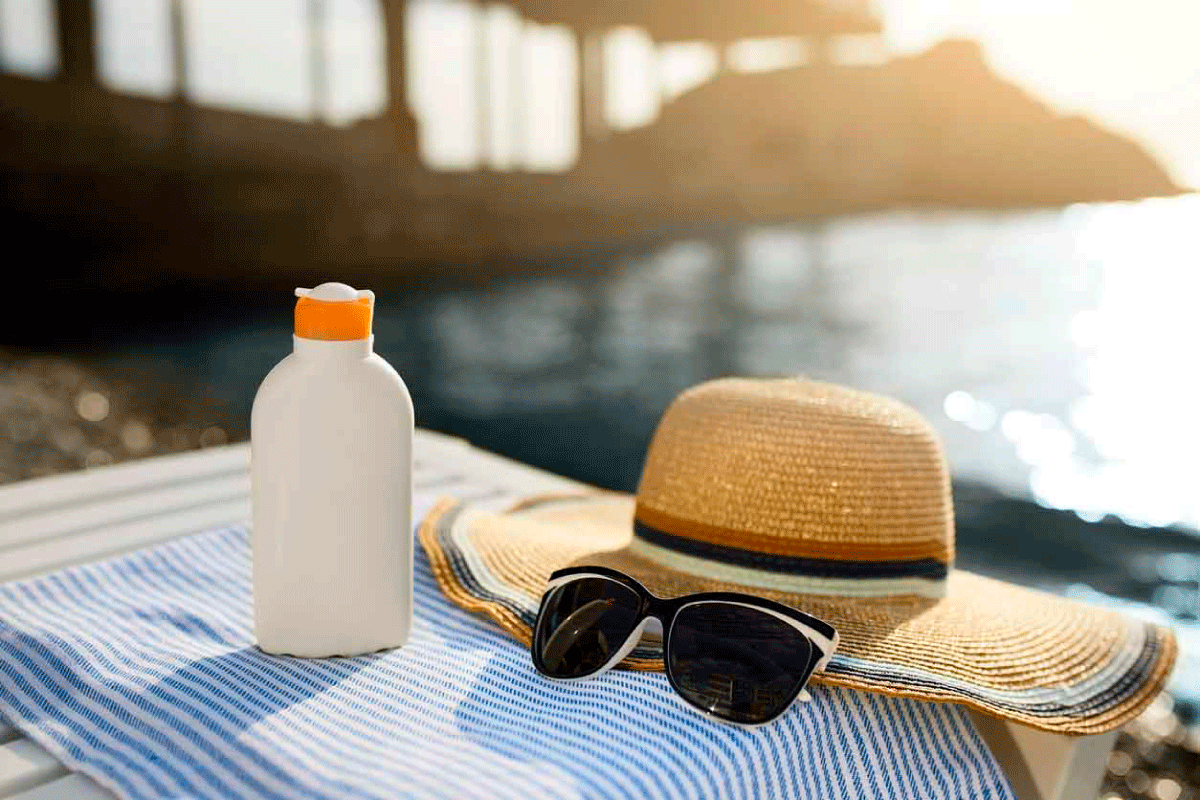Wellness tip: Shedding light on sun safety this summer

Proper protection from UV rays could be the difference between developing skin cancer later in life, or not.
For many of us, summer means longer days and more time spent outdoors. Science tells us that spending more time in nature can be an excellent way to support physical, mental and cognitive health. These benefits are moot, however, without proper protection from the sun’s strong ultraviolet (UV) rays.
Skin cancer is the most common type of cancer across the United States, despite it being one of the most preventable, according to The Skin Cancer Foundation1. Most of these cases have to do with overexposure to — and lack of protection from — the sun2. Around 80% of skin aging is attributed to sun exposure, and it’s estimated that one in every five Americans will develop some form of skin cancer before they turn 701.
While summer months rightfully spark conversations around sun safety, the risk remains all year long. UV rays from the sun shine on us through all seasons, reflecting off various surfaces and permeating even the cloudiest days2. Keep reading for tips from the US Centers for Disease Control and Prevention (CDC) and other sources on how to stay protected year-round.
Understand when you’re most exposed. According to the CDC, the sun’s rays are strongest between 9 a.m. and 3 p.m. during standard time (which falls in the summertime for most states) and 10 a.m. to 4 p.m. during daylight savings time (from early November to early March)2.
The UV Index changes day by day and is tracked and shared by the Environmental Protection Agency (EPA). The UV Index scale runs from 1 to 11, with 1 representing the lowest risk of UV radiation and 11 representing extreme risk3. The index is also associated with time of day — for example, if the UV Index is 8 or more, it would be wise to either stay inside during midday or take extreme precaution to protect yourself and loved ones from sun exposure.
Sunscreen is your friend! The CDC recommends that people apply broad-spectrum sunscreen with 15 SPF or higher before spending time in the sun, and reapplying every two hours. You may need to reapply sunscreen in shorter intervals if you’re swimming, sweating or drying off.
Seek shade, especially on sunnier days. You can find shade under a tent, tree or tall structure, or create your own by wearing protective clothing including hats and sunglasses. Long sleeved shirts and pants or skirts that provide protection without overheating your body are great choices, as are protective headwear and eyewear, for those spending long amounts of time in sunny weather2.
Stay away from indoor tanning beds. The UV radiation that powers indoor tanning beds is a proven carcinogen1. In 2014, the US Food and Drug Administration (FDA) reevaluated its classification of UV tanning devices, upping their status from Class I, or low risk, to Class II, or moderate to high risk, for human health1. Additionally, more than 419,000 cases of skin cancer in the United States annually are linked to indoor tanning1. Is a temporary tan really worth permanent damage?
Talk about sun exposure with your doctor. Annual checkups with a dermatologist are recommended to stay on top of skin health and identify potential issues early.
Regardless of how you enjoy sunny days this season and beyond, staying protected is paramount. Check out more sun safety tips from the EPA here.
Sources:
[1] The Skin Cancer Foundation (2024). “Skin Cancer Facts & Statistics: What You Really Need To Know.” Accessed June 9, 2024, from https://www.skincancer.org/skin-cancer-information/skin-cancer-facts/.
[2] U.S. Centers for Disease Control and Prevention (CDC). “Sun Safety Facts.” Accessed June 9, 2024, from https://www.cdc.gov/skin-cancer/sun-safety/?CDC_AAref_Val=https://www.cdc.gov/cancer/skin/basic_info/sun-safety.htm.
[3] Environmental Protection Agency (2024). “UV Index Scale.” Accessed June 9, 2024, from https://www.epa.gov/sunsafety/uv-index-scale-0.